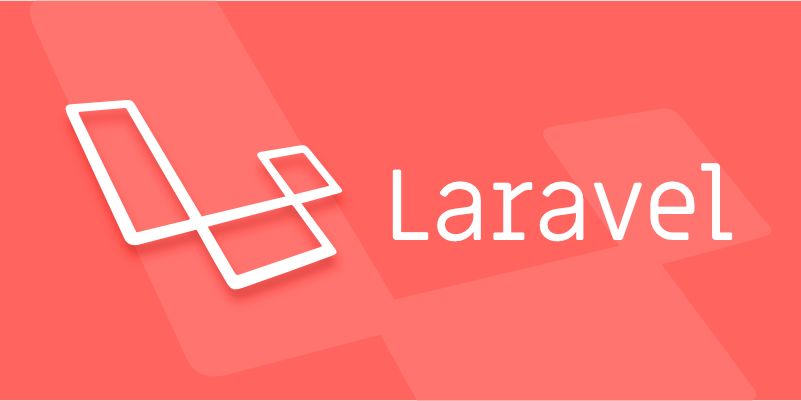拉拉维尔(Laravel)中有什么雄辩的ORM?
Eloquent ORM 是 Laravel 的内置对象关系映射系统,它通过 PHP 语法而非原生 SQL 操作数据库,使代码更简洁易维护;1. 每个数据表对应一个模型类,每条记录作为模型实例存在;2. 采用主动记录模式,模型实例可自行保存或更新;3. 支持批量赋值,需在模型中定义 $fillable 属性以确保安全;4. 提供强大的关系支持,如一对一、一对多、多对多等,通过方法调用即可访问关联数据;5. 集成查询构造器,可链式调用 where、orderBy 等方法构建查询;6. 支持访问器和修改器,可在获取或设置属性时格式化数据;7. 具备数据库无关性、SQL 注入防护及与 Laravel 其他功能无缝集成的优势;例如通过 User::find(1)->posts 可获取用户的所有文章,而 $user->delete() 会自动执行删除操作,所有 SQL 由 Eloquent 自动处理,开发者只需专注于 PHP 逻辑,因此 Eloquent 极大提升了开发效率和代码可读性。

Eloquent ORM is Laravel’s built-in Object-Relational Mapping (ORM) system, which provides a simple and elegant way to interact with your database using PHP syntax instead of writing raw SQL queries.

Instead of thinking in terms of tables and rows, Eloquent lets you work with database records as if they were PHP objects, making your code cleaner, more readable, and easier to maintain.
What Does ORM Mean?
ORM stands for Object-Relational Mapping. It’s a programming technique that connects object-oriented code to relational databases. With Eloquent:

- Each database table corresponds to a model (a PHP class).
- Each record (row) in the table is represented as an instance of that model.
- You can perform CRUD operations (Create, Read, Update, Delete) using methods on the model.
For example, if you have a users table, you’d create a User model, and then do things like:
$user = new User; $user->name = 'John Doe'; $user->email = 'john@example.com'; $user->save();
This inserts a new user into the database — no SQL required.

Key Features of Eloquent
1. Active Record Pattern
Eloquent uses the active record pattern, meaning a model instance can save itself to the database.
$user = User::find(1); $user->name = 'Jane Doe'; $user->save(); // Automatically updates the record
2. Mass Assignment & Fillable Attributes
You can insert or update multiple fields at once using create() or update(), but you must specify which attributes are mass-assignable for security:
User::create([
'name' => 'Alice',
'email' => 'alice@example.com'
]);In your model:
class User extends Model {
protected $fillable = ['name', 'email'];
}3. Relationships Made Easy
One of Eloquent’s strongest features is how it handles relationships between models.
Common relationship types include:
- One to One
- One to Many
- Many to Many
- Has Many Through
- Polymorphic Relations
Example: A User has many Posts:
class User extends Model {
public function posts() {
return $this->hasMany(Post::class);
}
}Now you can access them like:
$posts = User::find(1)->posts;
4. Query Builder Integration
Eloquent models inherit Laravel’s powerful Query Builder, so you can chain methods to filter results:
$activeUsers = User::where('active', 1)
->orderBy('name')
->get();5. Accessors, Mutators & Attributes
You can format or modify data when getting or setting model properties.
For example, automatically capitalize a name when setting it:
public function setNameAttribute($value) {
$this->attributes['name'] = ucfirst($value);
}Or format a full name when accessing:
public function getFullNameAttribute() {
return $this->first_name . ' ' . $this->last_name;
}Why Use Eloquent?
- Cleaner code: No messy SQL strings scattered in your PHP.
- Database agnostic: Switch databases (MySQL, PostgreSQL, etc.) with minimal changes.
- Built-in security: Protection against SQL injection via parameter binding.
- Powerful relationships: Define and use complex relationships with minimal code.
- Integrated with Laravel: Works seamlessly with other Laravel features like controllers, middleware, and Blade templates.
Quick Example
// Retrieve a user and their posts
$user = User::with('posts')->find(1);
// Add a new post
$post = new Post(['title' => 'My First Post']);
$user->posts()->save($post);
// Delete a user
$user->delete();Eloquent handles all the underlying SQL automatically.
Basically, Eloquent ORM makes working with databases in Laravel intuitive and expressive — you write PHP, not SQL, and Laravel does the heavy lifting. It’s one of the reasons Laravel is so popular among PHP developers.
以上是拉拉维尔(Laravel)中有什么雄辩的ORM?的详细内容。更多信息请关注PHP中文网其他相关文章!

热AI工具

Undress AI Tool
免费脱衣服图片

Undresser.AI Undress
人工智能驱动的应用程序,用于创建逼真的裸体照片

AI Clothes Remover
用于从照片中去除衣服的在线人工智能工具。

Clothoff.io
AI脱衣机

Video Face Swap
使用我们完全免费的人工智能换脸工具轻松在任何视频中换脸!

热门文章

热工具

记事本++7.3.1
好用且免费的代码编辑器

SublimeText3汉化版
中文版,非常好用

禅工作室 13.0.1
功能强大的PHP集成开发环境

Dreamweaver CS6
视觉化网页开发工具

SublimeText3 Mac版
神级代码编辑软件(SublimeText3)
 PHP中的对象关联映射(ORM)性能调整
Jul 29, 2025 am 05:00 AM
PHP中的对象关联映射(ORM)性能调整
Jul 29, 2025 am 05:00 AM
避免N 1查询问题,通过提前加载关联数据来减少数据库查询次数;2.仅选择所需字段,避免加载完整实体以节省内存和带宽;3.合理使用缓存策略,如Doctrine的二级缓存或Redis缓存高频查询结果;4.优化实体生命周期,定期调用clear()释放内存以防止内存溢出;5.确保数据库索引存在并分析生成的SQL语句以避免低效查询;6.在无需跟踪变更的场景下禁用自动变更跟踪,改用数组或轻量模式提升性能。正确使用ORM需结合SQL监控、缓存、批量处理和适当优化,在保持开发效率的同时确保应用性能。
 Laravel中的配置缓存是什么?
Jul 27, 2025 am 03:54 AM
Laravel中的配置缓存是什么?
Jul 27, 2025 am 03:54 AM
Laravel的配置缓存通过合并所有配置文件为一个缓存文件来提升性能。在生产环境中启用配置缓存可减少每次请求时的I/O操作和文件解析,从而加快配置加载速度;1.应在部署应用、配置稳定且无需频繁更改时启用;2.启用后修改配置需重新运行phpartisanconfig:cache才会生效;3.避免在配置文件中使用依赖运行时条件的动态逻辑或闭包;4.排查问题时应先清除缓存、检查.env变量并重新缓存。
 如何在Laravel测试中模拟对象?
Jul 27, 2025 am 03:13 AM
如何在Laravel测试中模拟对象?
Jul 27, 2025 am 03:13 AM
UseMockeryforcustomdependenciesbysettingexpectationswithshouldReceive().2.UseLaravel’sfake()methodforfacadeslikeMail,Queue,andHttptopreventrealinteractions.3.Replacecontainer-boundserviceswith$this->mock()forcleanersyntax.4.UseHttp::fake()withURLp
 如何在Laravel中实施推荐系统?
Aug 02, 2025 am 06:55 AM
如何在Laravel中实施推荐系统?
Aug 02, 2025 am 06:55 AM
创建referrals表记录推荐关系,包含推荐人、被推荐人、推荐码及使用时间;2.在User模型中定义belongsToMany和hasMany关系以管理推荐数据;3.用户注册时生成唯一推荐码(可通过模型事件实现);4.注册时通过查询参数捕获推荐码,验证后建立推荐关系并防止自荐;5.当被推荐用户完成指定行为(如下单)时触发奖励机制;6.生成可分享的推荐链接,可使用Laravel签名URL增强安全性;7.在仪表板展示推荐统计信息,如总推荐数和已转化数;必须确保数据库约束、会话或Cookie持久化、
 如何运行Laravel项目?
Jul 28, 2025 am 04:28 AM
如何运行Laravel项目?
Jul 28, 2025 am 04:28 AM
checkphp> = 8.1,作曲家和韦伯佛; 2.cleteproeateprojectandruncomposerinstall; 3.copy.env.exampleto.envandrunphpartisankey :生成; 4.setDatabasecredentialsin.envandrunphpartisanmigrate-seed; 5.StartServerServerWithPhpartisanServe; 6.optionallyrunnnpmins
 如何在Laravel中播种数据库?
Jul 28, 2025 am 04:23 AM
如何在Laravel中播种数据库?
Jul 28, 2025 am 04:23 AM
创建seeder文件:使用phpartisanmake:seederUserSeeder生成seeder类,并在run方法中通过模型工厂或数据库查询插入数据;2.在DatabaseSeeder中调用其他seeder:通过$this->call()按顺序注册UserSeeder、PostSeeder等,确保依赖关系正确;3.运行seeder:执行phpartisandb:seed运行所有注册的seeder,或使用phpartisanmigrate:fresh--seed重置并重新填充数据;4
 如何使用Laravel构建REST API?
Jul 30, 2025 am 03:41 AM
如何使用Laravel构建REST API?
Jul 30, 2025 am 03:41 AM
创建新Laravel项目并启动服务;2.生成模型、迁移和控制器并运行迁移;3.在routes/api.php中定义RESTful路由;4.在PostController中实现增删改查方法并返回JSON响应;5.使用Postman或curl测试API功能;6.可选地通过Sanctum添加API认证;最终得到一个结构清晰、功能完整且可扩展的LaravelRESTAPI,适用于实际应用。
 如何在Laravel应用中实现功能标志?
Jul 30, 2025 am 01:45 AM
如何在Laravel应用中实现功能标志?
Jul 30, 2025 am 01:45 AM
Chooseafeatureflagstrategysuchasconfig-based,database-driven,orthird-partytoolslikeFlagsmith.2.Setupadatabase-drivensystembycreatingamigrationforafeature_flagstablewithname,enabled,andrulesfields,thenrunthemigration.3.CreateaFeatureFlagmodelwithfilla







